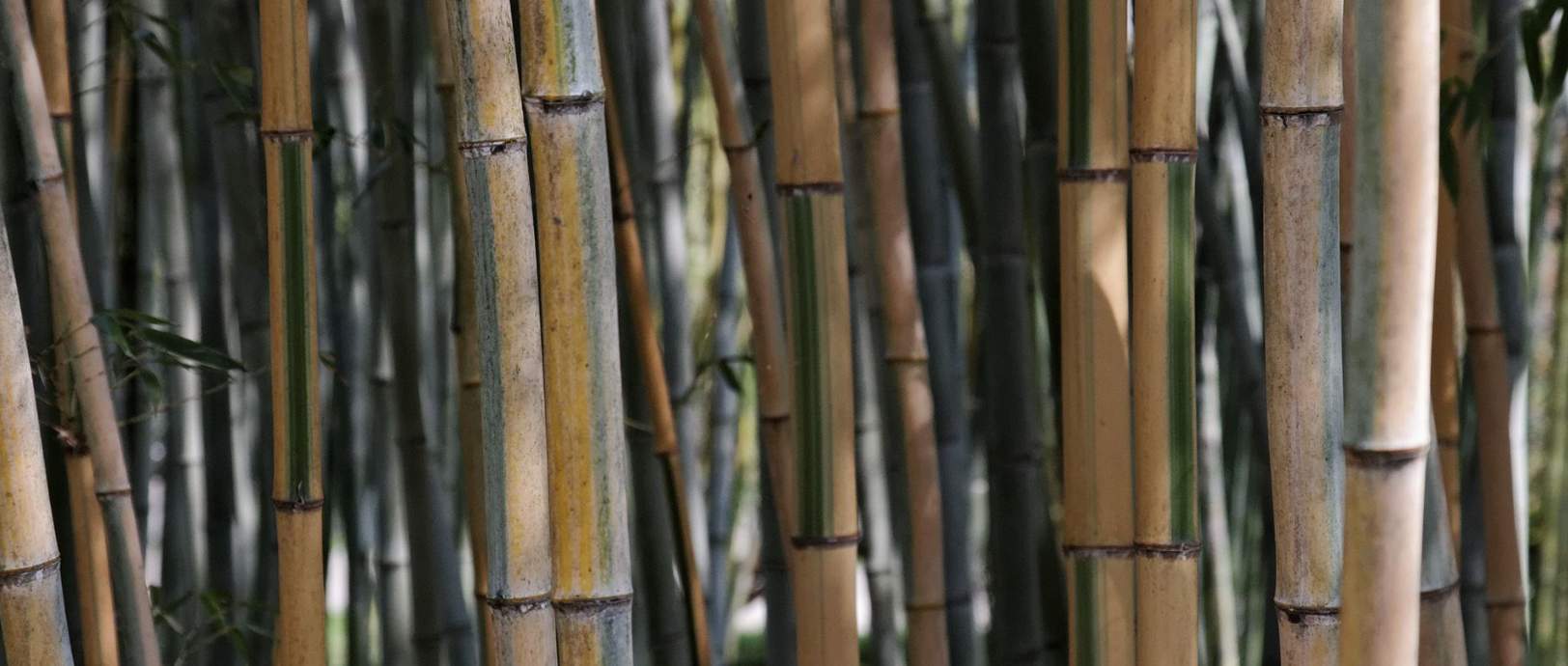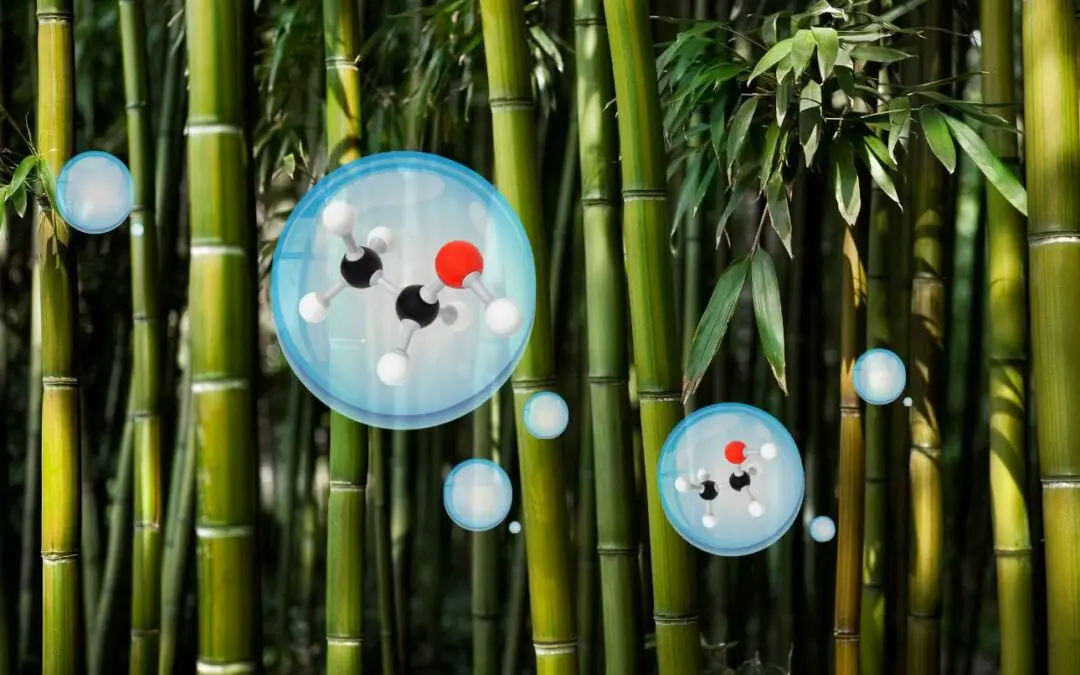In the critical quest to curb carbon emissions, our highest priority is probably to free ourselves from fossil fuel dependency. Biofuels are one of the most promising technologies, replacing petroleum fuel with renewable, plant-based products. And when it comes to renewable resources, nothing can surpass the sustainability of bamboo. So as a source of eco-friendly ethanol fuel, bamboo deserves a prominent place in our arsenal of alternatives.
Bamboo has the potential to provide a superior raw material for biofuel, namely ethanol, an eco-friendlier alternative to conventional, non-renewable petroleum. A remarkable growth rate and a minimal need for agricultural inputs make bamboo an obvious choice for a greener future with cleaner skies. And new technologies are now making it easier to convert high cellulose plants like bamboo into ethanol. Finally, ethanol (or ethyl alcohol) is not just a great source of green energy to fuel your car, it’s also the fortifying fluid that can fuel a cocktail party.
Why bamboo ethanol?
Food crops like corn and sugarcane, rich in starch and carbohydrates, are currently the leading sources of ethanol. But cellulosic ethanol, made from the cellulose of trees and grasses, could be even more promising. And bamboo, which isn’t generally a food crop, seems ideally suited for this purpose. Leveraging bamboo so that energy consumers and food consumers aren’t competing for the same crop is one advantage. But that’s only the beginning.
Growing faster than any plant on earth, and replenishing itself without having to be replanted, bamboo is the perfect antithesis to petroleum. A fossil fuel, petroleum comes from fossils, ancient dinosaur bones which time and pressure have turned into highly combustible hydrocarbons. In other words, it burns extremely well, but takes about a hundred million years to replace.
Bamboo takes only about five years to get established and reach maturity. From there, it can be harvested continuously. And like the grass in your front yard, it just keeps growing back. As it grows, bamboo produces about 30-35% more oxygen than an equal area of trees. And if managed properly, a bamboo plantation can serve as a tremendous carbon sink, sequestering CO2 from the atmosphere and storing it in the roots and biomass of the crop.
Producing ethanol from plants, trees and grasses
Essentially, there are two different ways to go about producing ethanol from plants. Currently, the more common method involves crops rich in sugar and starch (carbohydrates), such as corn, sugarcane and sweet sorghum. It turns out, what you can do with hydrocarbons (petroleum), you can also do with carbohydrates.
Conventional ethanol
To begin with, the plants are milled and the starches are broken down into sugars. These are the steps of liquefaction and saccharification. Next, with the addition of yeast, a simple fermentation process converts the sugars into alcohol, not unlike brewing beer. Distillation then burns off excess water and condenses the alcohol into a highly concentrated product, approximately 95% pure. Now you have potent grain alcohol, safe to drink (in moderation) if done properly. When making fuel, some gasoline is usually added at this point to denature the ethanol and make it undrinkable.
Cellulosic ethanol
The second method is very similar, but relies on high cellulose trees and grasses rather than grains, to produce cellulosic ethanol. This process requires additional steps to break the cellulose into sugar (with the use of cellulase enzymes), and to separate the sugar solution from the lignin. Bamboo, like trees and other grasses, is very high in cellulose, and lignin is often present as a binding agent for the cellulose fibers.
The fibrous composition of these plants makes the ethanol production a bit more complicated. But in spite of certain technological challenges, there are many significant advantages to cellulosic ethanol. Using grains and food crops, like wheat and corn, to make conventional cellulose puts added pressure on the food supply, leading to higher food prices. Furthermore, trees and grasses can grow in a wider range of climates and soils, making them a more practical alternative to grains.
Is bamboo ethanol a viable fuel source?
As of now, cellulosic ethanol production is not happening on a wide enough scale to make it commercially competitive. Botanists and environmental scientists agree, however, that this is the future of biofuel. And in that future, bamboo can (and should) play a major role.
The latest methodology for converting bamboo into ethanol fuel uses a bacteria called Zymomonas mobilis. As an alternative to yeast-based fermentation, this microbe can capture nitrogen from the atmosphere and produce ethanol more quickly than traditional methods. But chemists and microbiologists agree that more research is needed before bamboo-powered cars will become a viable alternative. And the research is already happening.
A “green race” is underway to develop better alternative fuel sources. Numerous chemical and biotech firms are working to make the cellulosic ethanol processing more effective and efficient, with more plants and better enzymes. Currently there are about 21 cellulosic ethanol plants in the US, either operational or under construction, covering just about every region of the country. Some of the plants rely on grasses as their feedstock, others on wood chips or multiple sources. One plant in Florida is making ethanol from citrus peels. Several such plants are now operating in Europe as well.
As more processing plants come online, the commercial viability of the fuel will only improve. And those plants which are set up to process wood chips should also be able to work with bamboo. What’s needed is a greater commitment, in both the private and public sectors, to make ethanol fuel practical and competitive.

Bamboo ethanol for bamboo booze
The fastest growing and most renewable resource on earth, bamboo might just save the planet. But can it spare you from the throbbing discomfort of a debilitating hangover? Unfortunately not. However, you can consume bamboo ethanol, like any other alcoholic beverage, as a way to loosen up and make merry.
Ethanol is ethyl alcohol, after all, the very same fermented compound found in those intoxicating beverages. Whether you ferment sugar, grain or bamboo, any carbohydrate can be turned into C2H5OH (also written as C2H6O). Ethanol is a potential fuel source, but it’s also the only form of alcohol that is drinkable. Swilling methyl alcohol will do far worse than give you a headache. And, of course, isopropyl (rubbing) alcohol is just way too pungent to swallow.
As of now, it’s hard to find bamboo sprits anywhere. There are a handful distilleries in China producing it, but you won’t find it on the shelf at BevMo. If you have the skill — and the still — maybe brew up a batch of your own. And let us know how it turns out.
The closest thing I’ve come up with so far is kelp alcohol, from Catalina Kelp Spirits in Southern California. If anyone in California has the technology and inspiration to distill bamboo alcohol, it’s got to be these guys. But giant kelp is perhaps the only plant on earth that can rival bamboo for fast growth and rapid renewability. The main advantage over bamboo, in terms of ethanol production, is that kelp is very low in lignin. And, in the event of a drought, giant kelp requires zero irrigation!
If it’s bamboo beer you’re interested in, be sure to look at this article on Cerveza Bambusa: Bamboo beer from Central Mexico.
Farming bamboo for ethanol
As farmers in the US and Europe are jumping onto the bamboo trend, some of them are having trouble finding a local market for the grassy harvest. The vast majority of bamboo processing still takes place in Asia, primarily in China. Farmers who think they can grow bamboo for bamboo clothing will find out that Chinese textile factories are not interested in importing their raw materials from overseas.
Planting bamboo is still great for the earth, like reforestation, as a way of capturing more carbon and cleaning the atmosphere. But taking the crop to market can be tricky. Many farmers end up just selling raw bamboo poles for special construction projects. Large hardware stores will often purchase high quality poles in bulk.
Selling bamboo as bioethanol feedstock turns out to be one of the easiest ways to make money growing bamboo. Ethanol processing uses the entire plant, leaves, culms, roots and all. And the quality of poles is unimportant. Younger culms are somewhat better, as they have a higher sugar content. But ultimately, any bamboo biomass will prove useful.
Domestic bamboo ethanol production not only offers a crucial way to reduce fossil fuel carbon emissions. It also provides an opportunity for farmers looking to grow a crop that is both financially profitable and ecologically beneficial. Let’s hope that private enterprises and policy makers can come together quickly to make this industry grow and expand. The time for sustainable energy has come, and the answers are right here.
Further reading
If you enjoyed reading about bamboo ethanol and alternative fuel sources, please consider sharing the article or subscribing to the blog. You might also take a look at these related posts.


























Which bamboo species will be more effective for ethanol production ?
That’s a great question. At this time, there’s no research or evidence to say one species is better or worse. It’s simply about producing the greatest quantity of biomass. Check out this article on the best species for bamboo farming.
1. Is there an operational manufacturing plant in the US that produces ethanol from bamboo? If yes, where is it located and can I visit it?
2. What is the viable economy of scale of operation for such an operation? What drives this economy of scale and how can this scale be reduced? (i.e., as an extreme scenario, can a single farmer with a small piece of land, operate an ethanol plant in their backyard?)
3. Given the yield of bamboo, how much land is needed for bamboo farming, if one is to operate a self-sustained ethanol making plant using this land?
Thanks for the great questions. I don’t know of any bamboo ethanol facilities operating in the US at this time. Given the technical and detailed nature of your other questions, you might need to hire a bamboo consultant to provide the most reliable answers.